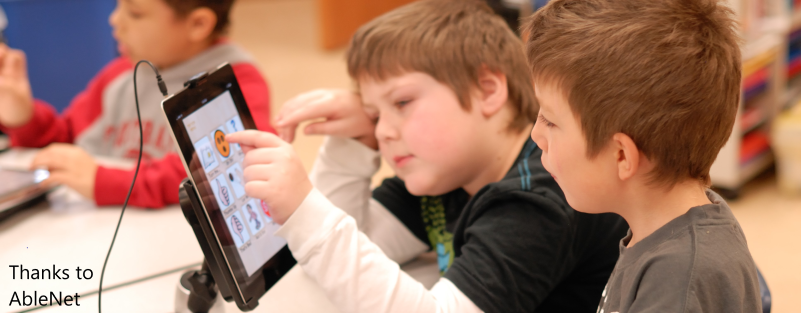Knowledge Base
Content
6e. Examples of other types of evaluation
Updated by Global Symbols with UNICEF ECARO

Approaches that may help when reviewing progress can be found under the Aac Guided Pathways Moodle course Level 2 AAC Strategies and Assessment and Level 3 Plan for Progression
Not all evaluation tools are open licenced and some have a cost involved, but in 2021 an American group, called the Communication Community wrote a helpful blog that lists several English language AAC Evaluation tools including the:
The Communication Matrix designed to "to help families and professionals easily understand the communication status, progress, and unique needs of anyone functioning at the early stages of communication or using forms of communication other than speaking or writing."
TOMS. Therapy Outcome Measures. (2014 report of the AAC TOMS research) An outcome measure used by many rehabilitation professionals to measure the impact of interventions. It is based on the World Health Organisation’s International Classification of Functioning, Disability and Health (WHO ICF). The tools are administered before and after an intervention. The 11-point rating scale has six points related to four domains, impairment, activity, participation and wellbeing.
GAS, Goal Attainment Scales. A method of scoring the extent to which a child’s individual goals were achieved in the course of intervention. Each child has their outcome measure but scored in a standardised way to allow statistical analysis. Tasks are individually identified to suit the child, and the levels are individually set around their current and expected performance levels.
- This approach has been successful with children where an individualised approach to intervention outcome measurement is needed and can demonstrate important change in different settings. The formal assessment of goal attainment can provide an accurate indication of success and offers the opportunity of a single interval measure to assess response to intervention.
- An important feature of GAS is the definition of criteria for a ‘successful’ outcome with the individual, which is agreed upon before intervention starts. Everyone has a realistic expectation of what is likely to be achieved and agrees that this would be worth striving for. Each goal is rated on a 5-point scale, with the degree of attainment captured for each goal area.